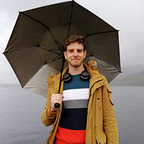Recipe.Me
Recipe finder app
Overview
For the first project of the UX Design Immersive course with General Assembly, I was the sole contributor on a mobile app that needed to address a problem area that our class partner had chosen from a list.
Goal
Design and prototype an app to solve my partner’s chosen problem.
Design Process
I followed an iterative design process with 5 clear steps but as I worked I made sure to update my understanding of the problem and solutions I was designing, especially at the build phase.
- Empathise — User interview, Experience Map
- Define — User Persona, User Storyboard, Problem statement
- Ideate — Brainstorming, User flow, Sketches
- Build — Prototype
- Test — Usability testing
Empathise
User Interview
Due to the lockdown, the whole course was held via Zoom so the learning curve was steep when it came to the user interview. With my previous experience in HR and as a teacher, I am used to talking to people and understanding their perspectives. This was a little different, but I quickly got into the swing of it. The first 5 min interview I established that it was his relationship with cooking he wanted to address. I then took 15 minutes and prepared an interview.
A few of the questions I covered to understand his pain points around food are:
- Please describe your current cooking routine?
- Can you tell me what you enjoy about cooking?
- What do you like to cook?
- What do you dislike about cooking?
User Experience Map
The interview gave me some rich insights that I used to make a user experience map for Jack and see where his pain point is. He was clearly struggling with inspiration for what to cook and this was frustrating him.
Define
User Persona
Armed with my user research, I then wrote up a persona for Jack to refer back to as I worked to understand his pains and designed him a solution that would get rid of the stress of deciding what to cook.
User Storyboard
I am still working at my drawing skills, but I loved sketching out a story board for the project, complete with ‘appropriate expressions’.
- Jack starts to feel hungry and decides he is going to cook something for dinner
- Jack looks in the fridge and doesn’t know what to cook
- Jack opens his handy app to give him some recipe ideas
- Jack is happy and cooking a new recipe with the food he had in the fridge
Problem Statement
The user research I gathered and the assumptions I made led me to the following problem statement from which I could start to ideate:
“Jack needs a simple way to find healthy recipes to cook because he lacks inspiration”
Ideate
Sketches
I diverged during the ideation process to come up with 6 different and big ideas to solve Jack’s problem. Three ideas came to me quite quickly and I was quite attached to them.
The last three ideas were unsurprisingly difficult to come by and odd if I am honest. These were my wild reaches which eventually turned into my favourite ideas. They were drawn back to “simple” and attempted to solve Jack’s problem in novel ways. Each iteration was simpler than the last and more focussed on Jack’s problem.
I realised my first three ideas didn’t actually solve Jack’s problem in a way that would be useful to him, I saw right away how important it is to come up with as many ideas as possible as I would have stopped with the solutions I liked and missed the better solutions.
Build
The solution I chose to prototype and test was an app that took what Jack already had in his home and gave him ideas of recipes that were possible to make. I used pen and paper to draw the screens and then loaded them onto Marvel to test with some of my classmates.
Test
I tested the first prototype with 3 users and collated their feedback to iterate on the design. I summarised the results onto the original sketches as seen below.
Learnings and What’s next
Although a fairly simple and short design sprint, I loved putting the theories into practice. Mostly I loved seeing that my sketching ability was much better than I thought and am now more confident with a pen and paper.
The biggest take away from this project is how helpful ‘big and not initially obvious’ ideas are to the design process. As I mentioned I likely would have gone with an easy (and inferior) solution if I had not sat and brainstormed all 6 ideas.
I used a big, orange post-it note book to draw my original sketches on, which added complications to my presentation as well as making the prototype strange colours. In future I will ensure I use white paper for my sketches.
As a concept project I won’t be taking this design further.
